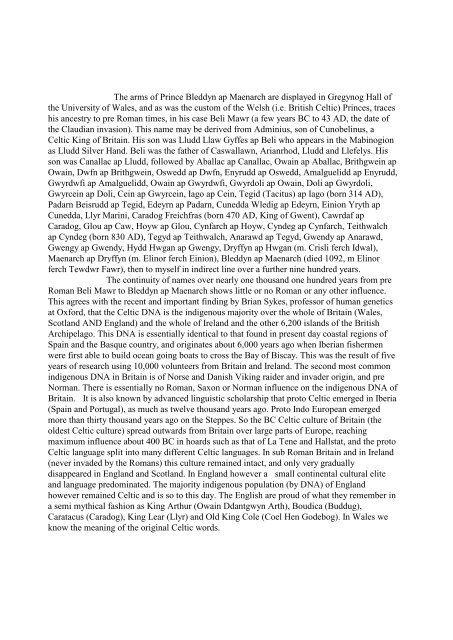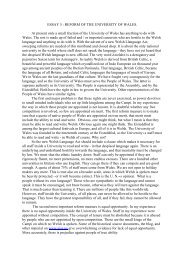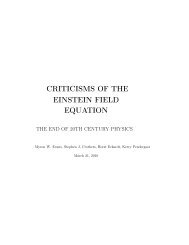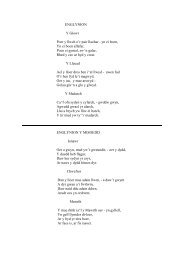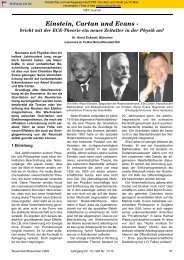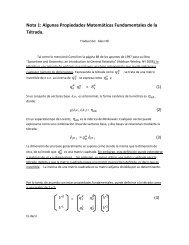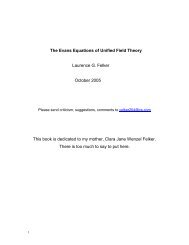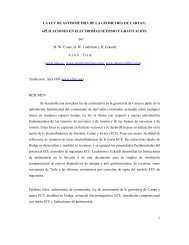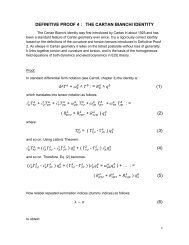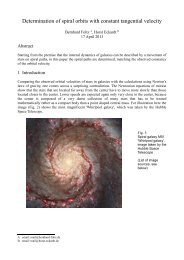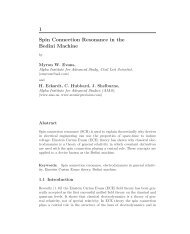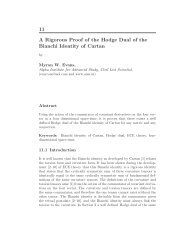You also want an ePaper? Increase the reach of your titles
YUMPU automatically turns print PDFs into web optimized ePapers that Google loves.
The arms of Prince Bleddyn ap Maenarch are displayed in Gregynog Hall of<br />
the University of Wales, and as was the custom of the Welsh (i.e. British Celtic) Princes, traces<br />
his ancestry to pre Roman times, in his case Beli Mawr (a few years BC to 43 AD, the date of<br />
the Claudian invasion). This name may be derived from Adminius, son of Cunobelinus, a<br />
Celtic King of Britain. His son was Lludd Llaw Gyffes ap Beli who appears in the Mabinogion<br />
as Lludd Silver Hand. Beli was the father of Caswallawn, Arianrhod, Lludd and Llefelys. His<br />
son was Canallac ap Lludd, followed by Aballac ap Canallac, Owain ap Aballac, Brithgwein ap<br />
Owain, Dwfn ap Brithgwein, Oswedd ap Dwfn, Enyrudd ap Oswedd, Amalguelidd ap Enyrudd,<br />
Gwyrdwfi ap Amalguelidd, Owain ap Gwyrdwfi, Gwyrdoli ap Owain, Doli ap Gwyrdoli,<br />
Gwyrcein ap Doli, Cein ap Gwyrcein, Iago ap Cein, Tegid (Tacitus) ap Iago (born 314 AD),<br />
Padarn Beisrudd ap Tegid, Edeyrn ap Padarn, Cunedda Wledig ap Edeyrn, Einion Yryth ap<br />
Cunedda, Llyr Marini, Caradog Freichfras (born 470 AD, King of Gwent), Cawrdaf ap<br />
Caradog, Glou ap Caw, Hoyw ap Glou, Cynfarch ap Hoyw, Cyndeg ap Cynfarch, Teithwalch<br />
ap Cyndeg (born 830 AD), Tegyd ap Teithwalch, Anarawd ap Tegyd, Gwendy ap Anarawd,<br />
Gwengy ap Gwendy, Hydd Hwgan ap Gwengy, Dryffyn ap Hwgan (m. Crisli ferch Idwal),<br />
Maenarch ap Dryffyn (m. Elinor ferch Einion), Bleddyn ap Maenarch (died 1092, m Elinor<br />
ferch Tewdwr Fawr), then to myself in indirect line over a further nine hundred years.<br />
The continuity of names over nearly one thousand one hundred years from pre<br />
Roman Beli Mawr to Bleddyn ap Maenarch shows little or no Roman or any other influence.<br />
This agrees with the recent and important finding by Brian Sykes, professor of human genetics<br />
at Oxford, that the Celtic DNA is the indigenous majority over the whole of Britain (Wales,<br />
Scotland AND England) and the whole of Ireland and the other 6,200 islands of the British<br />
Archipelago. This DNA is essentially identical to that found in present day coastal regions of<br />
Spain and the Basque country, and originates about 6,000 years ago when Iberian fishermen<br />
were first able to build ocean going boats to cross the Bay of Biscay. This was the result of five<br />
years of research using 10,000 volunteers from Britain and Ireland. The second most common<br />
indigenous DNA in Britain is of Norse and Danish Viking raider and invader origin, and pre<br />
Norman. There is essentially no Roman, Saxon or Norman influence on the indigenous DNA of<br />
Britain. It is also known by advanced linguistic scholarship that proto Celtic emerged in Iberia<br />
(Spain and Portugal), as much as twelve thousand years ago. Proto Indo European emerged<br />
more than thirty thousand years ago on the Steppes. So the BC Celtic culture of Britain (the<br />
oldest Celtic culture) spread outwards from Britain over large parts of Europe, reaching<br />
maximum influence about 400 BC in hoards such as that of La Tene and Hallstat, and the proto<br />
Celtic language split into many different Celtic languages. In sub Roman Britain and in Ireland<br />
(never invaded by the Romans) this culture remained intact, and only very gradually<br />
disappeared in England and Scotland. In England however a small continental cultural elite<br />
and language predominated. The majority indigenous population (by DNA) of England<br />
however remained Celtic and is so to this day. The English are proud of what they remember in<br />
a semi mythical fashion as King Arthur (Owain Ddantgwyn Arth), Boudica (Buddug),<br />
Caratacus (Caradog), King Lear (Llyr) and Old King Cole (Coel Hen Godebog). In Wales we<br />
know the meaning of the original Celtic words.


